Welcome to our website CareOfDog.com here you get the best information related to dogs. In this article, we are sharing Knowledge on 50 pic of Black and White Pomeranian
You can also read these articles:
- 5 Common Dog Bite Injuries in Los Angeles
- 17 Shih Tzu Breeders in Iowa | Shih Tzu Puppies for Sale
- Red golden retrievers characteristics, History, Health, Photo
- Breed Golden Retriever Dog
- Pitbull Puppies Pictures and Facts
Bulldog
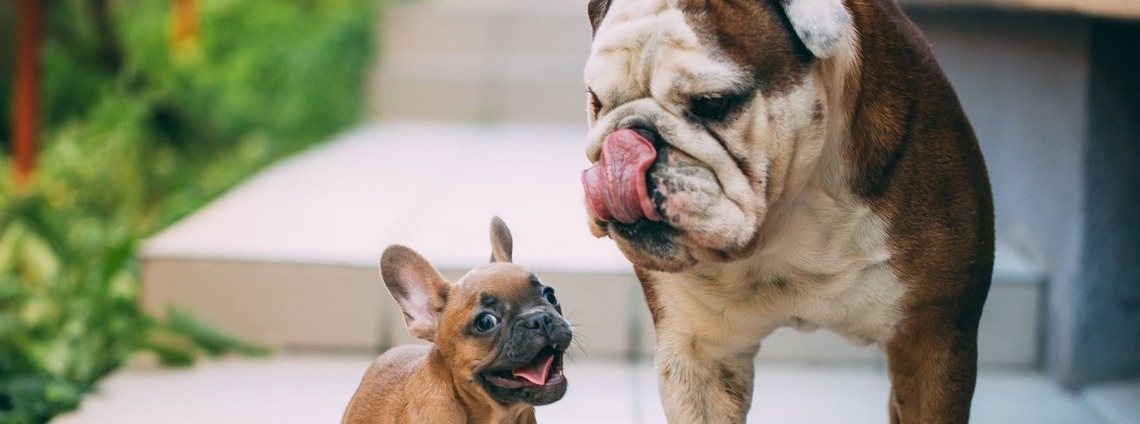
Table of Contents
Key qualities
- Courage
- Stubbornness
- Physical strength
- Moderate Activity
- Low need for grooming
- Difficulty in training
- The need for early socialization to suppress residual zoo aggression (attempts to attack relatives)
- Low frost resistance
- Increased salivation
- Loyal attitude toward children
Bulldog History of the breed
Bulldogs are closely related to the mastiff-like Alan. And the very history of the origin of the species goes back to the times before the birth of Christ and begins with Ancient Athens.
With the development of trade relations, the alleged ancestors of the Bulldog spread throughout England, where they were crossed with mastiffs and used as pickling dogs for bull-baiting – bull baiting. The breed was named the Old English Bulldog (Bulldog). And among its distinctive features were endurance, a dull feeling of pain, and pronounced intraspecific aggression.
Bulldogs of those times were squat, powerful, and had enough weight to bend the bull’s head to the ground and win the fight. Due to the specifics of temperament and conformation, the animals were bred exclusively for persecution. However, with the passage of the Law on the Protection of Animals (1835), fighting in the arena had to be banned, and the breed had to be retrained as companions. So the bulldogs spread throughout the world and began to be divided into subspecies, having received new specializations. For example, in America, dogs were actively used to work on farms. And in Spain – for the protection of homes and property.
Today, the largest livestock of bulldogs is recorded in England, France, America, Canada, Spain, and Italy. Separate branches are represented in Brazil, Australia, and New Zealand.
What does a bulldog look like
The Bulldog is a stocky short-haired dog with a robust body, large head, and strong muscular limbs. The chest line is parallel to the floor line and forms a square with the leg lines from the front.
The breed standard, including height at the withers, colour, eye, and nose colour, depends on the bulldog variety and country of breeding.
Below are the subspecies of bulldogs with descriptions of their appearance and breed characteristics.
Spanish Alano (Spanish Bulldog)
The Spanish Alano is a dog for the protection of the home and property of the owner with fighting, pickling, and hunting past. Today the breed is used exclusively as a guard. But due to the lack of undercoat and short hair, which does not hold heat well, it is only suitable for home keeping. A dog of this breed is service-oriented but tends to show dominant behavior and test the owner’s leadership qualities for strength. The character of the Alano is considered to be restrained.
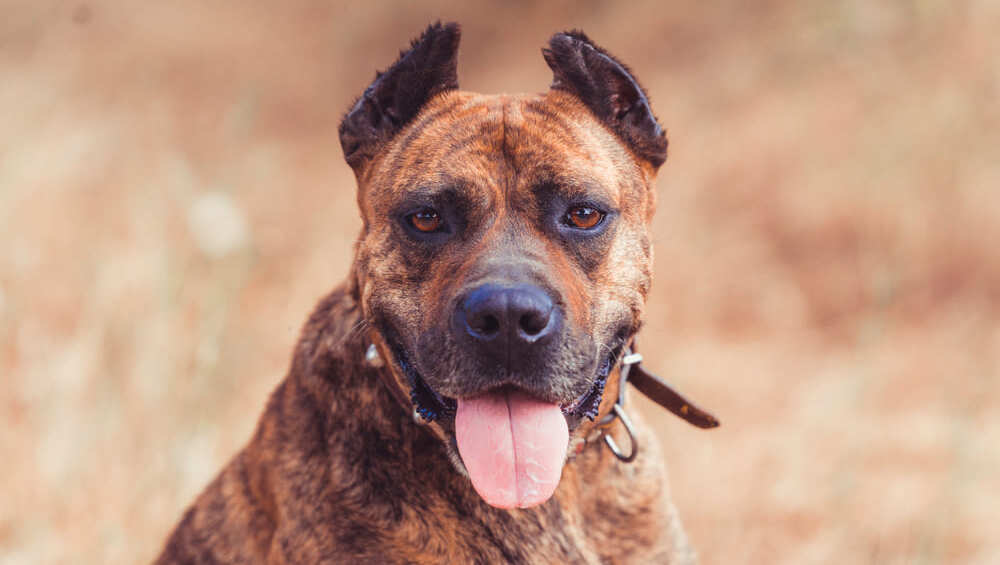
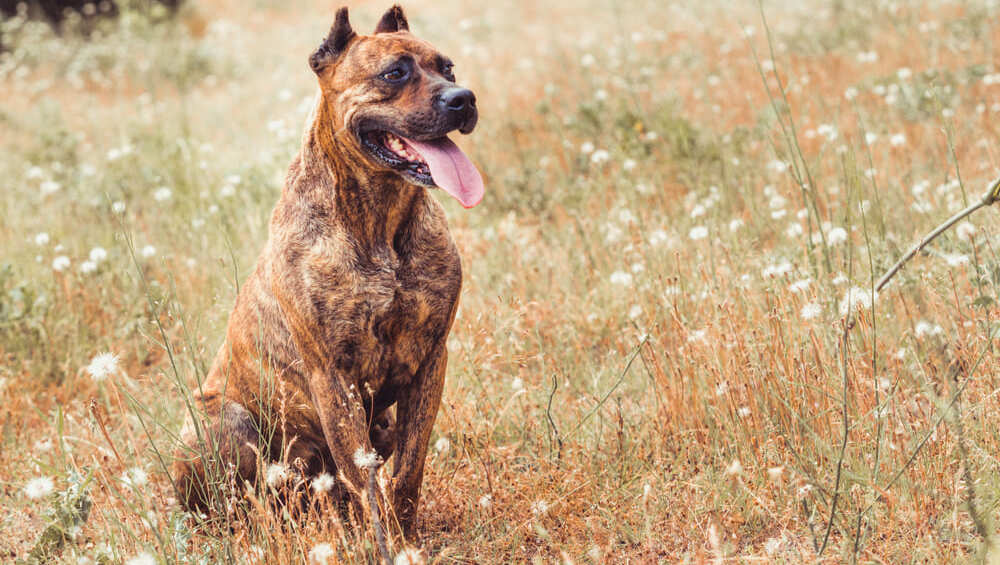
With other dogs, “Spaniards” do not conflict. But at the sight of strangers, they become wary or even aggressive. Therefore they need early socialization and group sessions with a dog handler. In matters of content, they are unpretentious. But they require regular physical activity and exhausting long-distance walks.
Please note: Spanish Alano has appeared in Russia since 2015. The breed is not widespread but has good potential.
Alapakh Bulldog (Bulldog Otto)
The Alapakh Bulldog is a versatile dog for guarding, hunting, and grazing, resulting from crossing an English Bulldog and regional pit-type dogs for working on farms.
But finding a worthy representative in your country will not be easy. The animal has a balanced character, vigilance, and trademark bulldog stubbornness in training matters. At the same time, it remains unobtrusive and not prone to barking when kept in a city apartment.
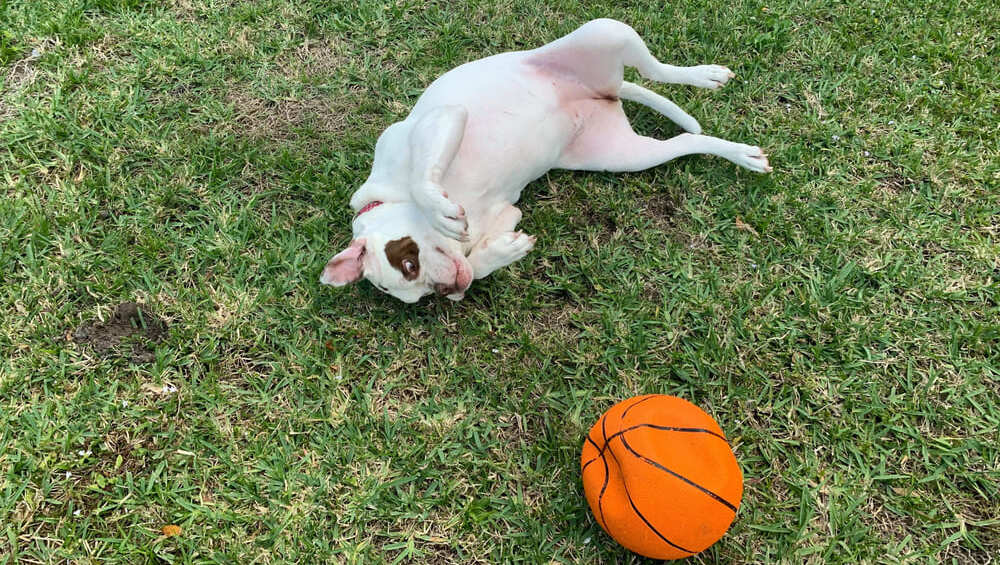
The breed was bred in America, Georgia, and is one of the smallest in the world (about 150 individuals). It is almost impossible to meet her in Russia or another country. The primary livestock is localized on the American continent. Therefore, the breed has not been recognized by the Fédération Cynologique Internationale (FCI). Please note: in Russia, the bulldog otto is included in the list of dangerous breeds that require walking in a muzzle.
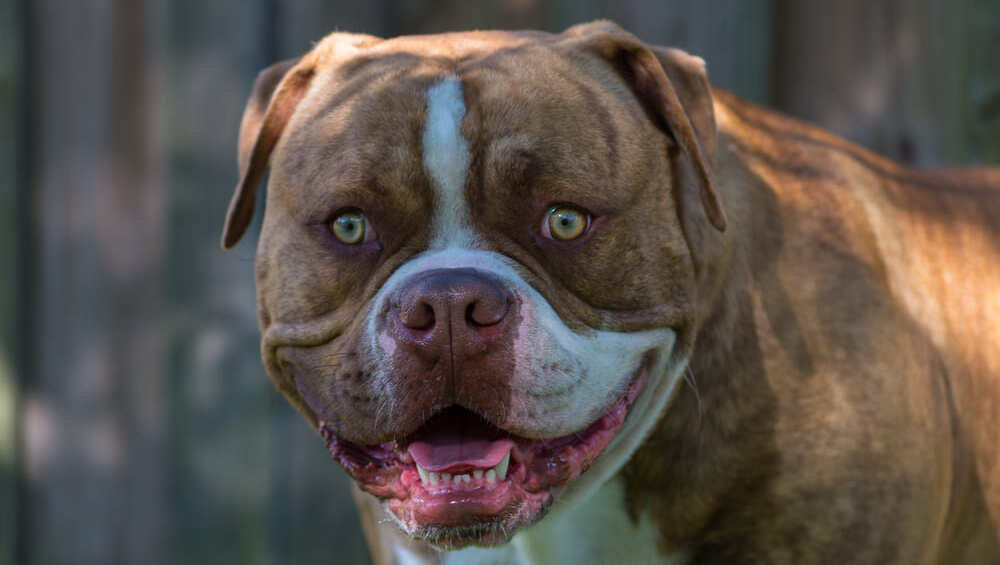
American Bulldog
The American Bulldog is the closest descendant of the Old English, presented in two subspecies at once: classic for guarding and standard for working on farms and hunting. The classic look is overweight, with a short brachycephalic snout. Standard – athletic, with a slightly elongated muzzle and an innate pursuit instinct. The breed developed in relative isolation from other countries and, in the absence of a surge of new blood, inevitably encountered inbreeding (crossing of closely related individuals).
Recently, however, both species began to interbreed with each other, which led to the formation of a hybrid – a large dog, combining the character of a guard dog and the mobility of a hunter.
New generation American Bulldogs are friendly and sociable with their family members, slightly aggressive towards other animals, and neutral-alert towards strangers. Working dogs of this breed are still used for hunting wild boars and grazing cattle. However, the overwhelming majority of individuals are rapidly retraining as companions.
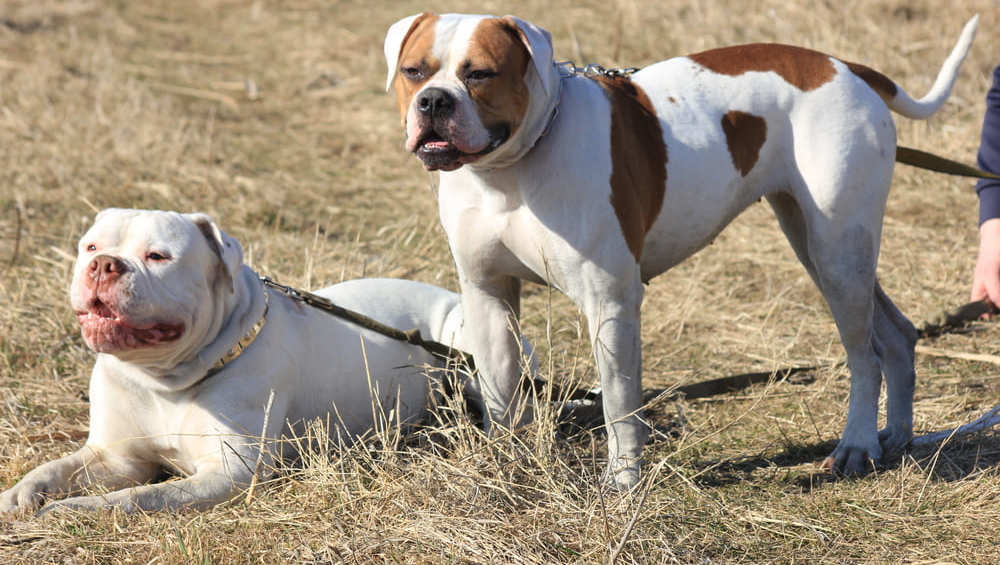
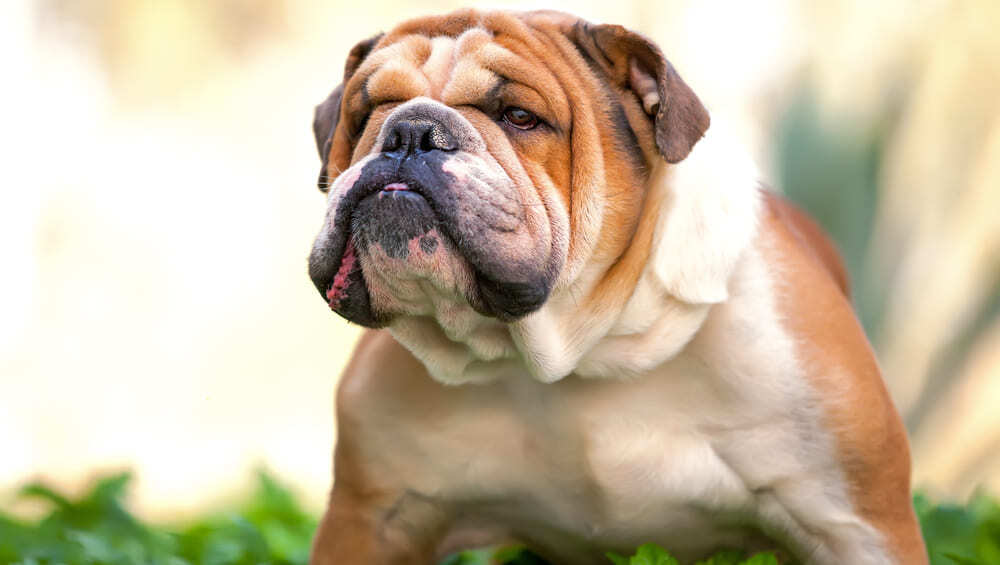
English Bulldog
The English Bulldog is one of the best dogs for children of all ages. In this case, the fighting past of the breed is not a hindrance. It was possible to suppress aggression and explosive character at the genetic level. And all because with the state ban on bullying, which came out in 1835, the fighters had to be retrained into companions: unbalanced and vicious dogs were simply not allowed to mate, and over time the breed turned into a decorative breed, and in many families also a sofa.
The modern Bulldog loves to be stroked, enthusiastically plays with children, and calmly lies next to him while the owner reads or watches TV. The breed is designed for a measured pace of life, walking walks, and minimal physical activity.
The only problem with keeping bulldogs is the residual zooaggression towards other dogs that will meet during the walk and competition for the owner’s attention with other pets in the house.
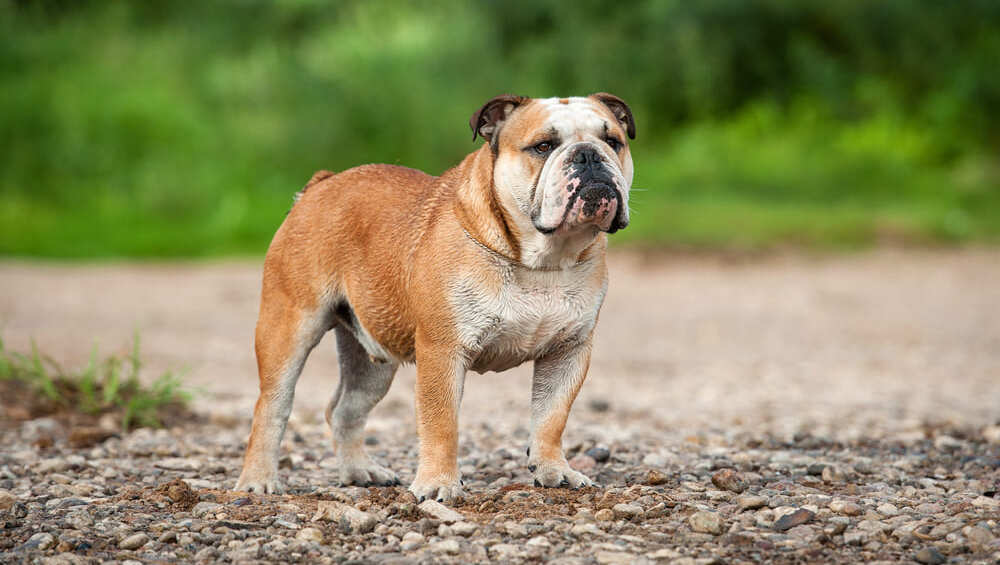
Bulldog Campanaro (Brazilian Bulldog)
The Campaign Bulldog is a powerful and physically strong dog for driving cattle and working in a slaughterhouse. It is rarely used as a companion dog. But for the protection of home and territory, it is quite suitable.
The dog retained the ferocious temper and exterior of its direct ancestor – the Old English Bulldog. The animal is distinguished by stubbornness, endurance, and pronounced aggression when defending the territory entrusted to it. Camper is listed as a potentially dangerous breed and is recommended only for experienced dog breeders.
You can buy a purebred Brazilian Bulldog in the homeland of breeding or the USA. The Brazilian National Club of Camppeiro will help with the search for licensed nurseries. There are no professional breeders in Russia.
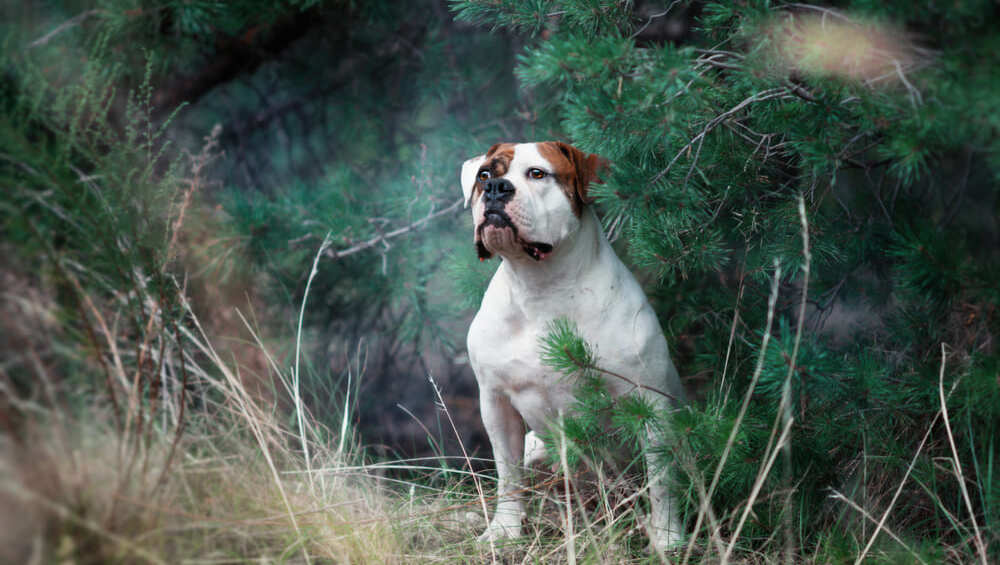
Catahoula bulldog
The Catahoula Bulldog (Catahula Bulldog) is the result of mating between the American Bulldog and the Catahula hunting leopard dog, the official symbol of the state of Louisiana, USA. The combination of genes has endowed the fighting breed with the subtle flair and agility characteristic of hunters. That is why the Catahoula Bulldog is used for search and rescue operations. However, the breed did not receive wide distribution around the world. And in countries such as Denmark or Germany, it is completely prohibited for import due to a direct relationship with the fighting type.
Catahoula Bulldogs are not recommended for keeping smaller animals in the house. A developed hunting instinct makes us see prey in them, therefore it is impossible to guarantee a neutral or friendly attitude towards a cat, decorative dog, or small rodent.
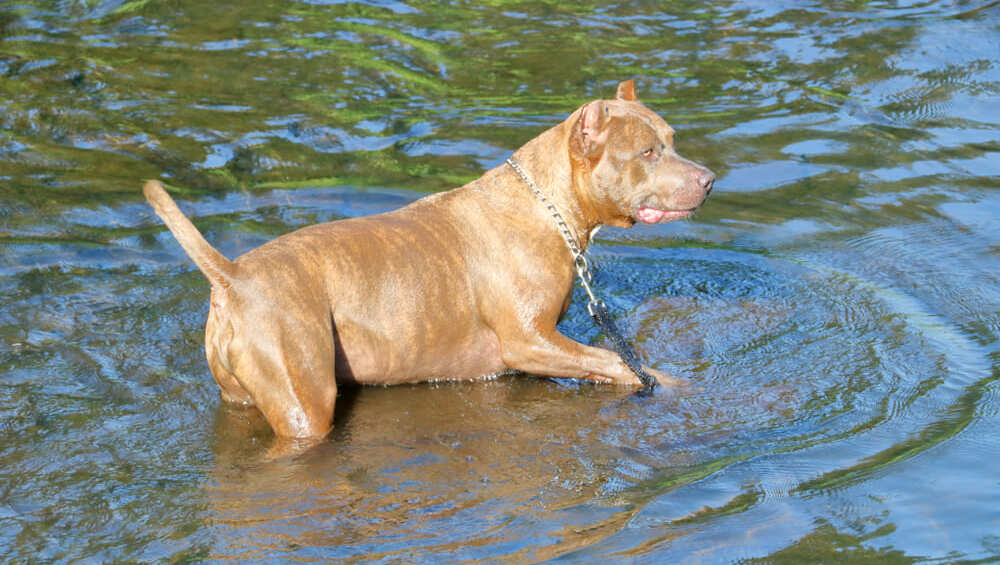
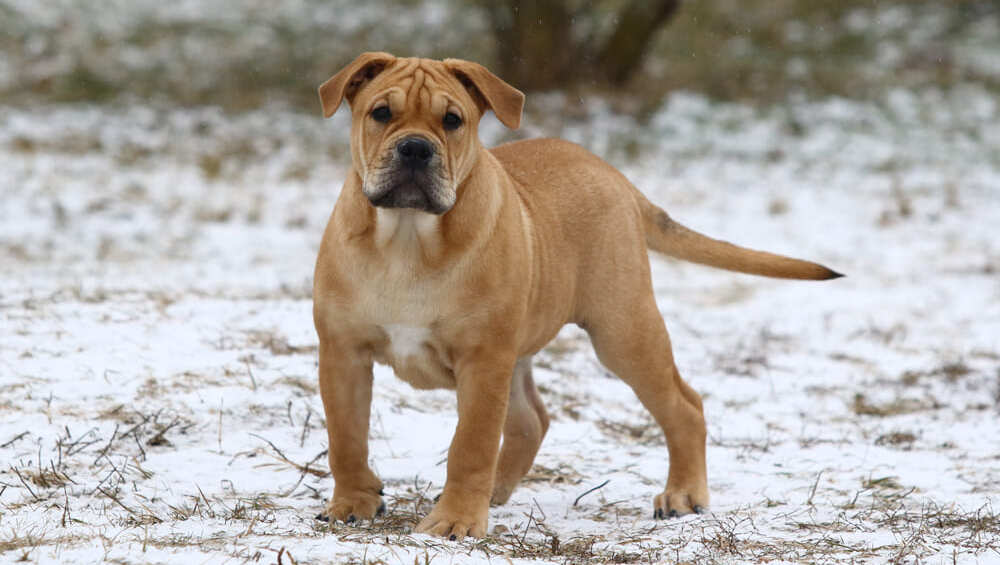
Ca de Bo (Major Mastiff)
Ca-de-Bou is a breed chosen to participate in bullfighting, and now it is a guard, friend, and companion for a family with children, single owners, or owners of large landholdings.
The Major Mastiff is bred based on fighting dogs from Britain and Iberian Mastiffs, combining courage, endurance, and excellent guarding qualities of both parents.
The pet does not single out one owner, but treats all family members tenderly, survives loneliness relatively easily, is neutral towards guests, tremulous to children.
The formidable appearance of the ca-de-bou hides a good-natured and patient character. However, with proper preparation, the animal can be used as a bodyguard. The breed is easy to train but requires uncompromising human leadership. Feeling weak, the animal will not miss the opportunity to take the place of the leader on its own. Therefore, this subspecies of Bulldog is not suitable for owners without experience.
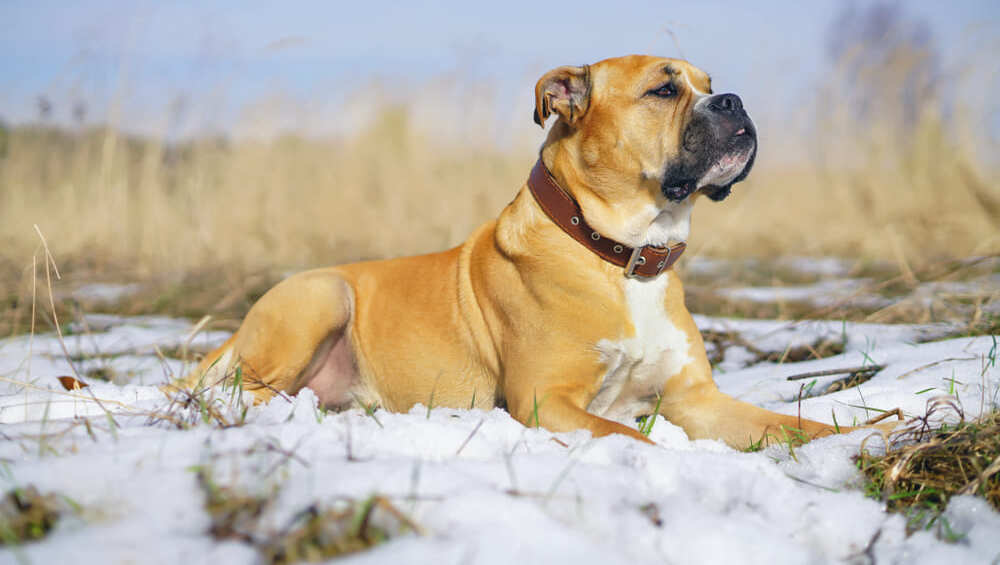
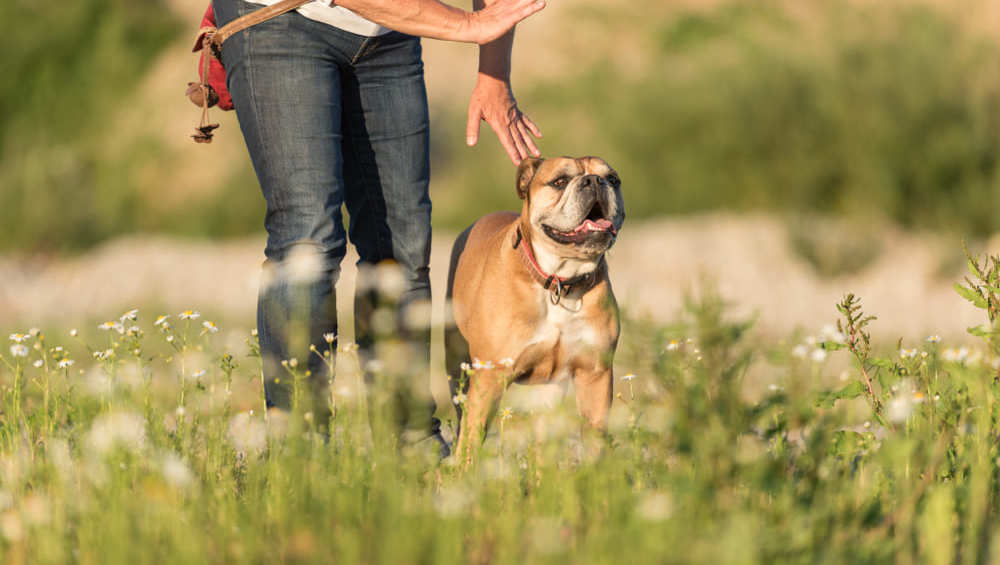
Continental Bulldog
The Continental Bulldog appeared in Switzerland at the beginning of the 21st century. The new breed is based on the English and recreated Old English Bulldog. Only the anatomy of the animal has become more balanced.
The Continental Bulldog is shorter, with a slightly elongated muzzle and less distant limbs. This makes it easier for the dog to move and breathe.
And her general health is better. After all, the Swiss have achieved a departure from the standard of the brachycephalic type (short muzzle). Therefore, the animal has become less susceptible to temperature extremes and respiratory diseases.
Modern continental bulldogs have a sustained friendly character and balanced behavior, which will allow you to keep a dog of this breed in a city apartment without fear of destroying the house and aggressive attacks towards guests. At the same time, the Bulldog retains its signature vigilance and will always indicate a danger if it appears.
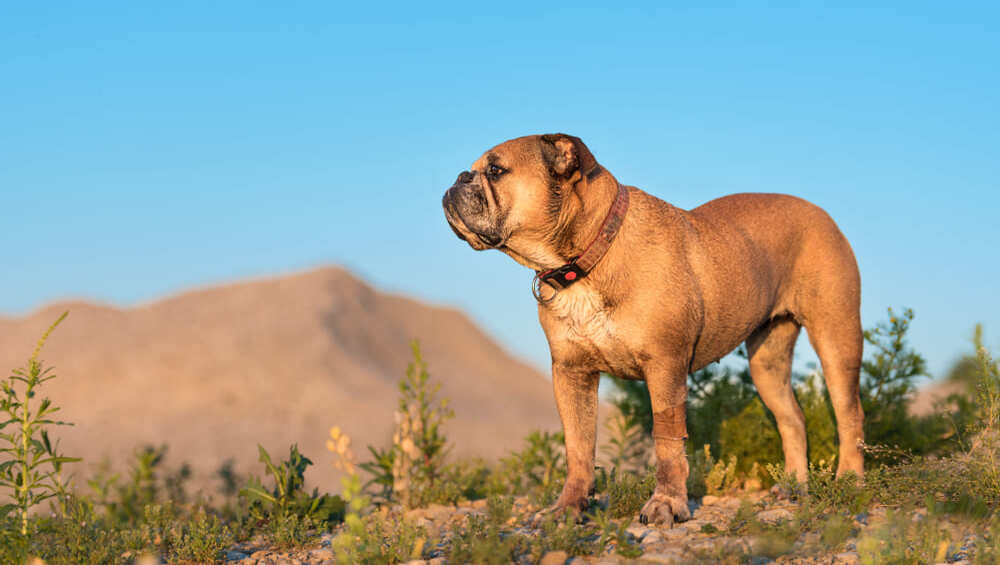

Modern Old English Bulldog
The modern Old English Bulldog is a re-created version of the early 19th-century breed. The dog acquired the recognizable features of an extinct ancestor. At the same time, she became less aggressive and excitable.
Modern Old English Bulldogs are bred in the United States based on the English and American Bulldog, Pit Bull, and Bullmastiff. The combination of bloodlines of several lines made it possible to achieve ideal proportions. At the same time, maintain health and endurance.
The recreated “Englishman” can participate in agility, accompany the owner during long walks and act as a bodyguard. The representative of the breed has a moderate spirit of competition. But with timely socialization with other pets in the house, it does not conflict. The main thing is not to forget to reward the dog for obedience. Bulldogs are addicted to the praise of their owner and only agree to work with emotional support.
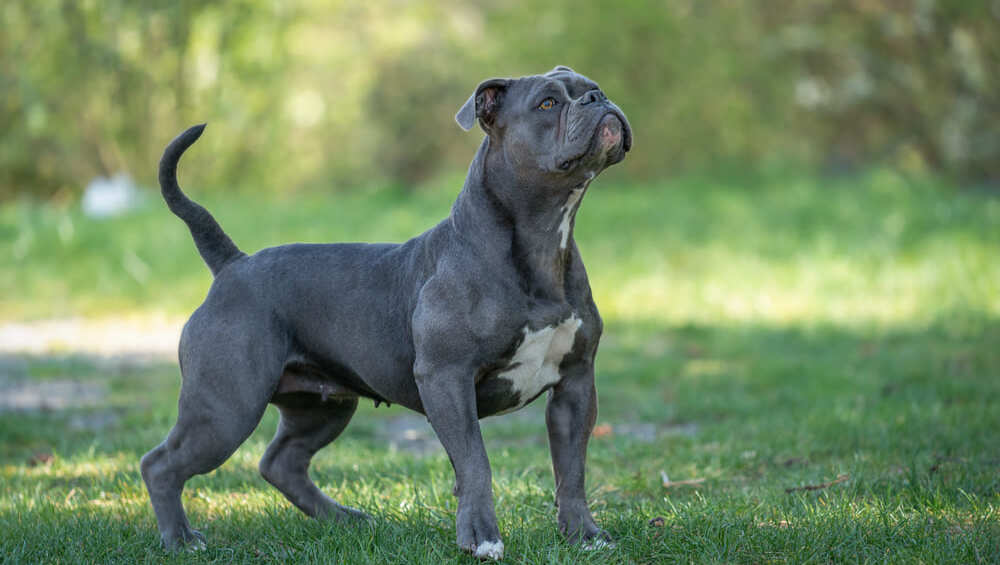
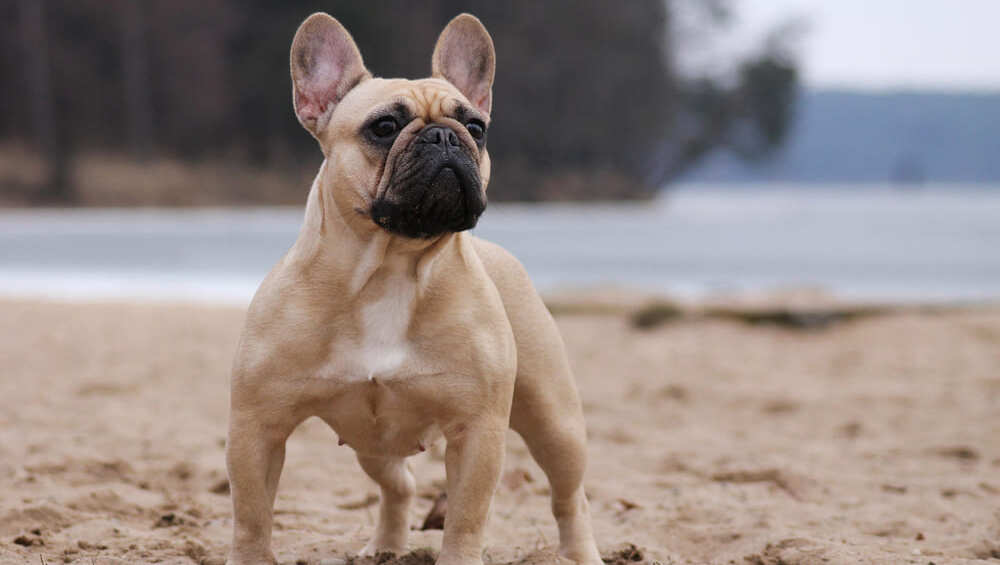
French Bulldog
The French Bulldog is the result of crossing a small English Bulldog with terriers and pugs.
The breed originated during the economic crisis of 1848-1860 when many Englishmen moved to the north of France and took their pets with them. Over time, the representatives of the breed became a national treasure, returned to the UK as a separate species, and were recognized by the English Kennel Club.
The modern French Bulldog is a powerful but compact dog with erect bat ears and a short brachycephalic muzzle.
The animal has a balanced character. But the owner can be jealous of other animals in the house and show zooaggression.
When assessing intelligence, the breed is put in 109th place on the Koren scale. It is believed that the dog does not remember complex commands well and shows disobedience during training. However, this is due to the breed-forming bulldog stubbornness. In other words, the animal understands the task well but performs only what it sees as necessary.
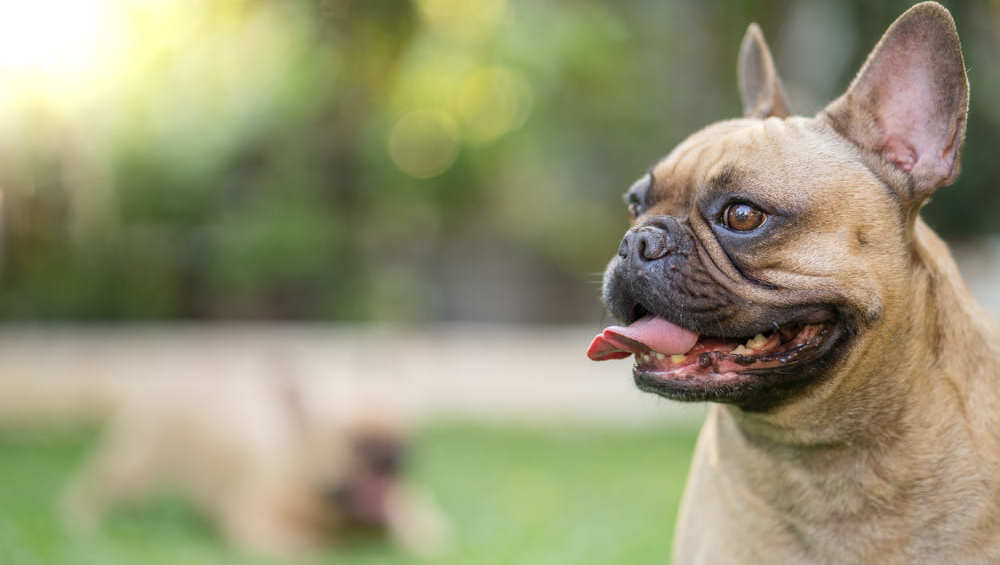
Health and disease
Like all breeds of the brachycephalic type, Bulldogs have inherited poor health and a predisposition to several pathologies. Due to short airways, which cause breathing problems and a tendency to respiratory illness, even the healthiest animals do not live to reach 12 years of age. In addition, bulldogs are susceptible to heatstroke. If you leave a dog of this breed in a stuffy room or a car, its body is cramping, and it begins to choke. If you walk under the scorching sun or in the cold, it starts wheezing due to mucus accumulating in the nasopharynx.
Other health problems common to Bulldogs include:
- dysplasia of the hip joints;
- obesity;
- complications during childbirth;
- food allergy;
- cataract;
- interdigital cysts
- adenoma of the third century;
- dermatitis.
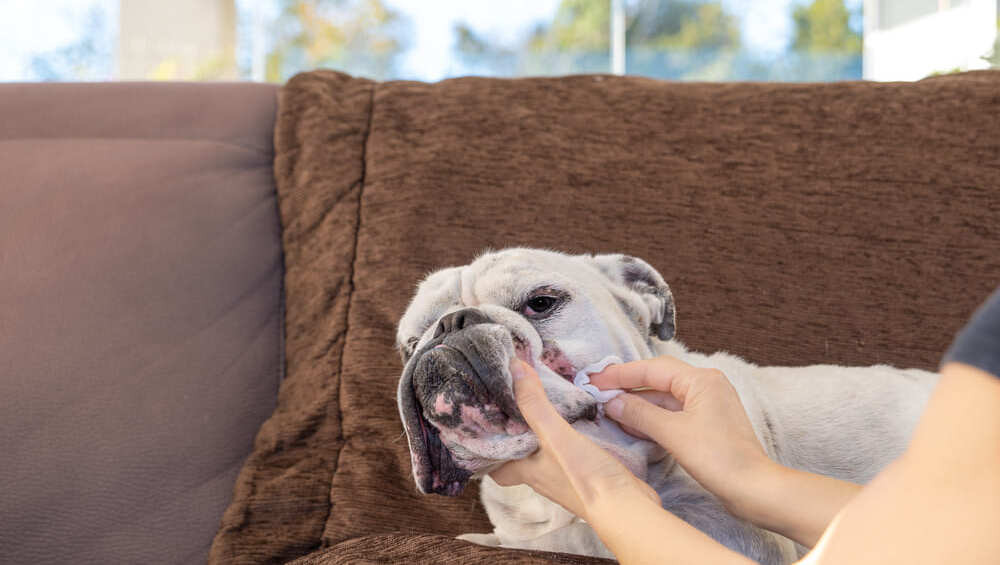
Care and maintenance
Basic bulldog care consists of 5 grooming procedures: hygiene of the folds on the face, cleaning and combing out the coat, rubbing the eyes and ears, trimming the nails, and brushing the teeth.
To clean the folds, use non-woven wipes – these can be napkins from a pet store or ordinary household wipes moistened with boiled water, and in case of skin damage or maceration – chlorhexidine. Wipe each fold with a damp cloth, remembering to remove excess moisture. The skin should remain dry after the procedure.
Frequency: every 2-3 days. In summer, wipe the folds more often.
To groom the Bulldog’s coat, wipe the Bulldog with an alcohol-free damp animal wipe or wet towel, then work in the direction of hair growth with a rubber massage brush. This will improve blood circulation and strengthen the hair follicles.
Frequency: 1-2 times a week.
Use pet store cleansing lotions and cotton pads for eye and ear hygiene. Perform the procedure with clean hands.
Frequency: 1-2 times a week.
You will need a nail clipper to trim the nails. Grasp only the bent triangular tip, avoiding damage to the capillaries located closer to the nail bed. To understand that the claws have already grown, take a closer look at the pet’s movement. Long feet interfere with the correct placement of the paws and knock on the floor.
Frequency: 1-2 times a month.
For oral hygiene, veterinary dog paste, a bone from veins, and dry food with abrasive particles that remove plaque are suitable. If you find tartar, see your veterinarian. The doctor will remove it with an ultrasound.
Frequency: once a week.
Feeding
The Bulldog’s due to the tendency to gain weight and the risk of food allergies.
When feeding with natural food, pay attention to possible allergens. Introduce new foods gradually, carefully observing the dog’s reaction. Avoid chicken, wheat, and corn in your diet – these foods can cause stool disorders and allergies. Build your diet with your veterinarian dietitian. It can help you calculate your serving size and daily nutrient requirements.
When feeding industrial foods, choose the premium or super-premium line for dogs with sensitive digestion. For example, Purina PRO Plan Sensitive. This food will support the normal functioning of the digestive tract and improve the condition of the coat.
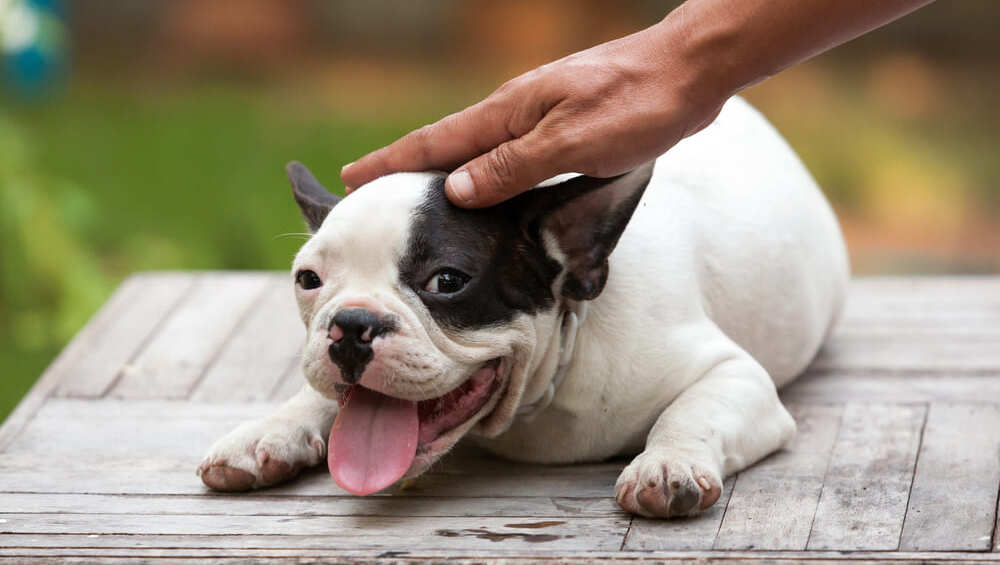
Owner’s memo
How to choose a bulldog puppy
- Collect information about the nursery. The responsible breeder must be registered with the canine organization of the country of breeding. In Russia, it is RKF.
- Assess the conditions for keeping the animals. The breeder should provide for the availability of free space for games, beds, unhindered access to clean water. Dogs should look healthy and not be caged.
- Check your puppy’s papers. Pedigree Bulldog puppies are sold with a puppy test and a veterinary passport. Also, the breeder must provide a contract for the transfer of rights to the puppy. Pet-class puppies can be sold sterile. Weaning a puppy from its mother earlier than 3 months is not recommended.
- Observe the puppies in motion. Healthy bulldogs move with a free confident step, are keenly interested in new objects, demonstrate mobility and enthusiasm.
- Pay attention to the anatomy. The puppy should be moderately well-fed. But not fat. The abdomen is free of bumps and scratches. Eyes and ears – clean, no caked discharge. The area under the tail is dry, without a foreign smell.